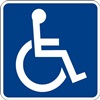
Legislation that has changed the lives of millions of Americans, including more than one in ten Hoosiers, marks its 29th anniversary today. The Americans with Disabilities Act was signed into law on June 26, 1990, and is considered the most significant piece of civil-rights legislation since the Civil Rights Act of 1964.
Peter Berg with the Great Lakes ADA Center, which serves Indiana explains in 2008, the bill was amended to clarify the definition of ‘disability,’ and provide broad protection from discrimination. And he notes as the world changes, the law needs continued updating.
“Within the last five [to] eight years, the Department of Justice revised its regulations covering state and local governments, and private businesses,” says Berg. “It also issued updated accessibility standards. It went a long way in attempting to unify the ADA standards with other industry standards.”
The ADA aims to ensure that people with physical or mental disabilities have the same rights and opportunities as others in all areas of public life – including employment, education and transportation. While the law has transformed accommodations for many with disabilities, some advocates contend the country must be committed to fulfilling the full promise of the ADA, by working to create a more inclusive society.
Berg says one area that needs improvement in the ADA is information technology, since it was implemented at a time when the internet didn’t exist.
“There are no accessibility standards that apply to technology,” says Berg. “There could be some room to issue standards that say, ‘OK, this is what an accessible website is. This is what an accessible kiosk is, and this is what an accessible app is.'”
Recently, two retail organizations asked the U.S. Supreme Court to take a case involving a blind customer who sued Domino’s Pizza because its website and mobile app were not accessible to people using screen-reading software.
Research conducted by the international law firm Seyfarth Saw found website-accessibility lawsuits rose from about 800 in 2017 to 22-hundred in 2018.




